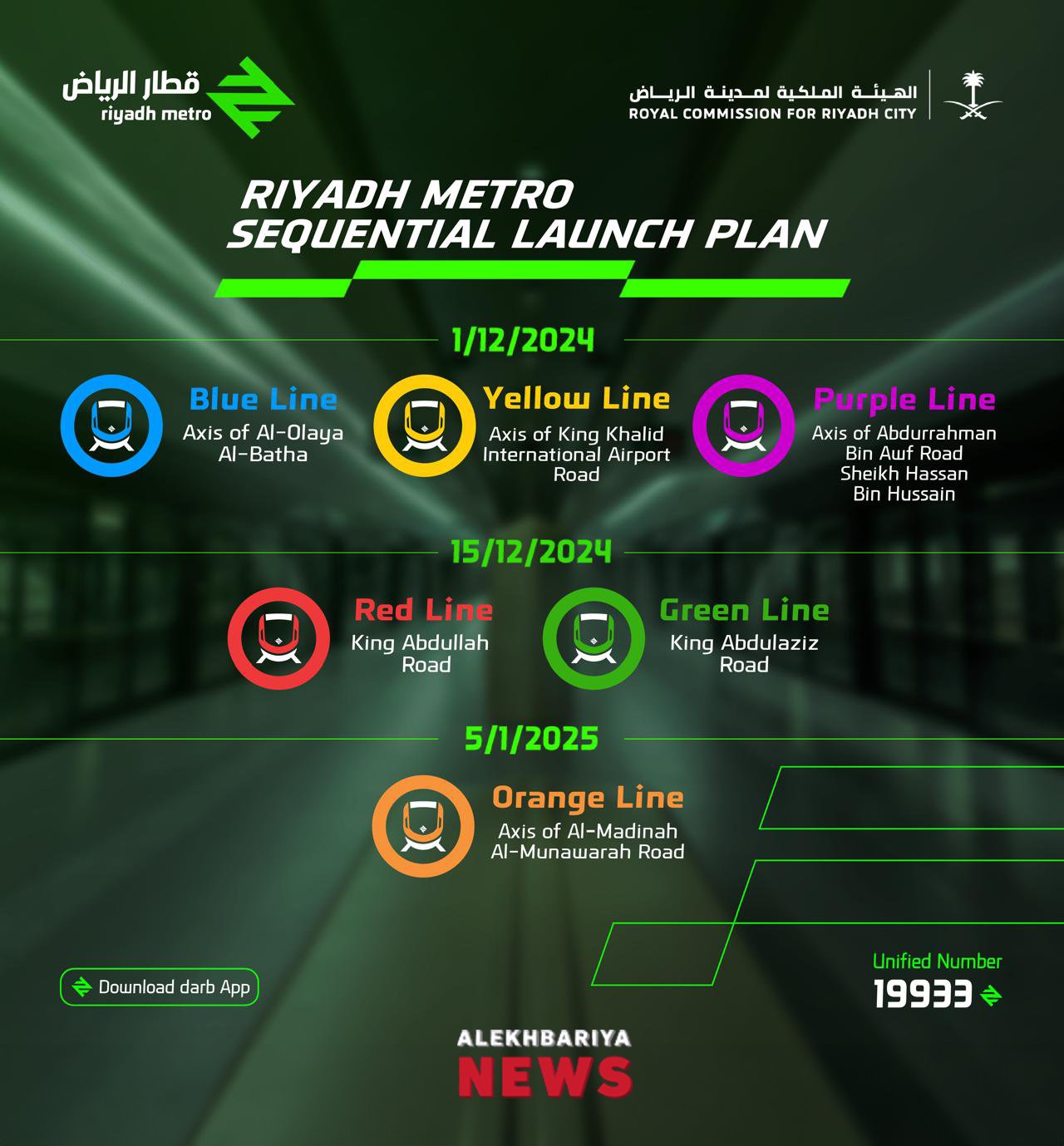RIYADH: Saudi Arabia’s King Salman inaugurated the Riyadh Metro project on Wednesday, Saudi Press Agency reported.
The project is considered the backbone of the public transport network in Riyadh, SPA said.
King Salman watched an introductory film about the project, which is distinguished by its exceptional design and technical specifications.
The Riyadh Metro consists of a network that includes six train lines measuring 176 km and 85 stations, including four main stations.
“The Riyadh Public Transport Project, which spans metro and bus networks, is the culmination of concerted efforts made by King Salman and the outcome of his visionary leadership while serving as the Chairman of the High Commission for the Development of Arriyadh, the predecessor of the Royal Commission for Riyadh City,” Crown Prince Mohammed bin Salman said.
The Public Transport Project in Riyadh City was launched based on various studies prepared by the High Commission for the Development of Arriyadh.
The studies considered the current and future needs of the public transport sector in the capital and identified the best solutions and options for establishing a sustainable public transport system that is compatible with the city and its characteristics.
The metro will begin to be available for public use from Dec. 1 and will operate daily from 6 a.m. to midnight.
The lines will open over the next two months in stages — with the blue, yellow and purple lines opening on Dec. 1, the red and green lines opening on Dec. 15, and the orange line opening on Jan. 5, 2025.
Following the announcement, Saudi Minister of Tourism Ahmed Al-Khateeb posted on X: “Under the patronage of the Custodian of the Two Holy Mosques, may Allah protect him, the #RiyadhMetro project was inaugurated — reflecting the leadership’s commitment during this prosperous era to enhancing Riyadh’s infrastructure and raising the quality of life in the city.
“This aligns with the goals of #SaudiVision2030, further establishing the city’s position as a tourist destination that attracts visitors from around the world.”

Abeer Al-Shehri, a Riyadh-based lawyer, told Arab News that the new metro would cut the time she spent in traffic and the number of postponed appointments.
“As a lawyer, my profession involves fieldwork at courts, the Public Prosecution and police stations. Sometimes I have to attend sessions at the office while also having two important appointments to attend,” she said.
“With the traffic, there’s not enough time for both, so I’m forced to postpone one. Additionally, client meetings at the company’s office often take place around noon, and it’s well known that at that time, it’s impossible to reach the location within an hour without being late.
“This forces me to leave at least an hour earlier. The metro will significantly improve the time wasted in traffic, and as a lawyer, it will allow me to commute back and forth to the office in record time.”
Riyadh resident Faisal Suliman Al-Anzy told Arab News that he was “happy and excited” about Wednesday’s announcement.
He plans to use the metro “for visiting friends, (especially at) the weekend when there are traffic jams everywhere.”




























